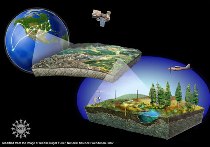The insect predation game: evolving prey defenses and predator responses
Author(s): Gillian Schultz
Foothill College
2238 total view(s), 296 download(s)
Summary:
This is an FMN participant modification of the TIEE module "The Insect Predation Game: Evolving Prey Defenses and Predator Responses," authored by W. Wyatt Hoback and Tamara L. Smith in 2006.
Contents:
Bundle(ZIP | 64 KB)
- License terms
Description
The module and supplements were implemented at Foothill College by Gillian Schultz.
- Course: Biology 9 lab- Environmental Biology
- Course Level: Non-majors introductory level environmental biology course
- Instructional Setting: Students take lecture as a separate course where the basic concepts and ecological principles are covered. The lab is all hands-on interactive activities.
- Implementation Timeframe: The class length is three hours. With the introductory lecture specific to insect predation and prey relationships, this seemed about the right amount of time.
Notes
I am going to try this again in the next year and I am going to try several things to scaffold it more appropriately.
- I will start by introducing concepts of natural selection with a graphing activity that shows how ONE population can change over time in response to selection. Any of the following activities from HHMI can accomplish this including the Rock Pocket Mouse activity or Lizard Selection by Predation from HHMI and the ecological relationships of predator-prey dynamics and competition. I will also introduce population growth curves and talk about the logistic and exponential models of population growth and what drives those.
- I have an existing excel activity I do with the Lotka-Volterra equations in which the students can manipulate herbivore and predator variables (intrinsic rate of growth, carrying capacity etc…) to see how populations fluctuate in response. I have only used this with majors but I think if I scaffold it clearly, it will be useful with non-majors as a precursor to doing this activity where they generate the numbers.
- Finally, I will use the predator prey game to try to tie the concepts together.
Cite this work
Researchers should cite this work as follows:
- Schultz, G. (2017). The insect predation game: evolving prey defenses and predator responses. ESA Data Discovery FMN (2017), QUBES Educational Resources. doi:10.25334/Q4X59V
